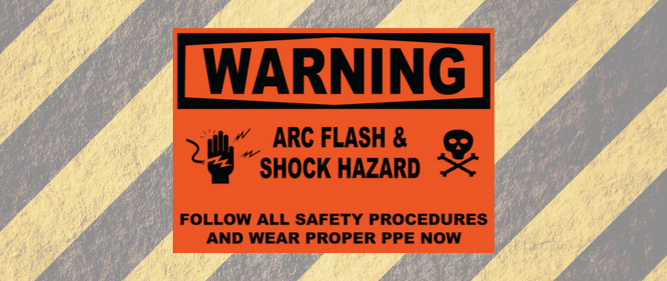Arc flashes are a potential safety risk when it comes to your manufacturing facility’s electrical equipment. But how can you ensure your employees are protected?
The National Fire Prevention Association (NFPA) 70E, “Standard for Electrical Safety in the Workplace,” provides safety procedures for using electricity on the job. One of its guidelines includes “arc flash” assessment and protection.
NFPA 70E is voluntary on the part of companies — that is, it is not enforced by any government agency — yet, we’re seeing more companies interested in conducting an “arc flash hazard analysis” of their electrical equipment.
Here are four frequently asked questions I’ve received about arc flashes and assessments to reduce them:
What is an arc flash?
An arc flash is a major electrical workplace hazard that occurs when a flashover of electric current deviates from its intended path and travels either through the air or to the ground. These are extremely dangerous incidents that can cause injuries and even death. Arc flashes can be triggered by dust, condensation, faulty installation, material failure or corrosion, misaligned equipment and dropping tools.
How are workers protected?
A worker operating or working on the electrical equipment is protected from arc flashes by wearing the correct category of personal protective equipment (PPE). Arc flash PPE categories range from 1 to 4 and are based on the energy level of a potential arc flash from the electrical equipment.
How do you know which PPE category to wear?
This is where the arc flash hazard analysis comes in. The analysis uses software to model the electrical equipment, calculate the energy of a potential arc flash (referred to as the “incident energy”) and assign the appropriate PPE category for workers. The analysis generates labeling for the equipment that warns the worker of the arc flash hazard and specifies which category PPE the worker should wear. Providing this information could help reduce potential legal liability if there is an accident.
What equipment should I have analyzed?
Many clients have asked me if an arc flash hazard analysis and related labeling is only for new facilities or newly installed equipment. While it should be a part of every new build/install, an analysis can be performed at your existing facility as well. It’s really a question of how much you wish to spend on voluntary guidelines to mitigate the risk of employee injury and potential legal liability. A consensus among the people I’ve talked to is that the cost of investing in the labeling is low compared to the risk and cost if something goes wrong.
Stellar regularly conducts these analyses for manufacturing facilities and distribution warehouses. If you’d like to learn more about an arc flash hazard analysis, email me at foodforthought@stellar.net or connect with me on LinkedIn.



